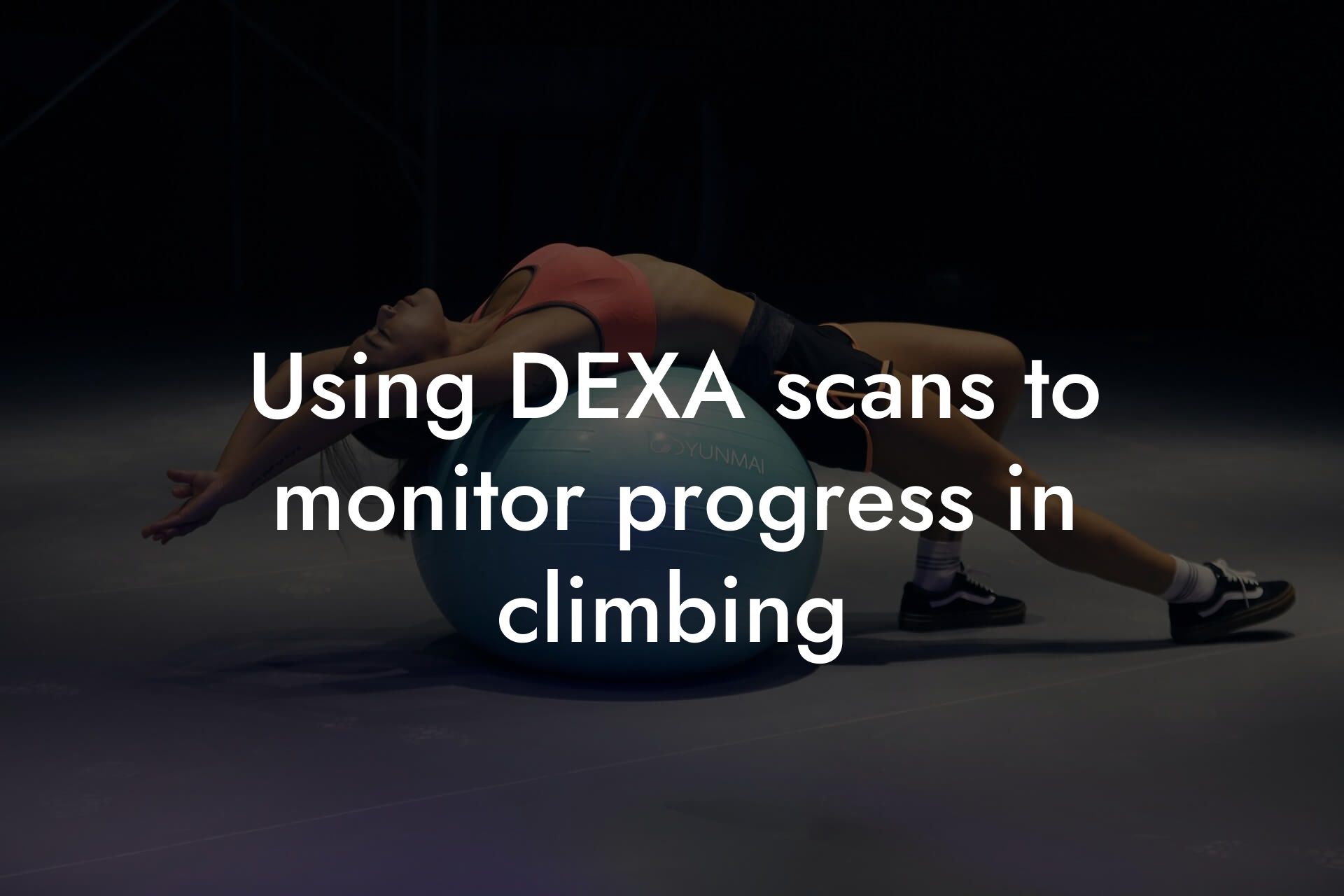As an amateur climber, you're likely no stranger to the physical demands of the sport. Climbing requires a unique combination of strength, endurance, and technique, which can be challenging to develop and maintain. At Tano Performance Group, we understand the importance of optimizing your physical performance to take your climbing to the next level. In this article, we'll provide a comprehensive guide to strength training programs specifically designed for amateur climbers like you.
Table of Contents
- Why Strength Training is Essential for Climbers
- Understanding Your Climbing Goals and Needs
- Key Muscle Groups for Climbers
- Strength Training Exercises for Climbers
- Creating a Strength Training Program for Climbers
- Incorporating Strength Training into Your Climbing Routine
- Monitoring Progress and Avoiding Injury
- Frequently Asked Questions
Why Strength Training is Essential for Climbers
Strength training is a crucial component of any climber's training regimen. Climbing requires a strong upper body, core, and legs to support your movements and maintain control on the wall. Without adequate strength, you may struggle to complete routes, experience fatigue, and increase your risk of injury. A well-structured strength training program can help you build the strength and endurance you need to tackle more challenging climbs and improve your overall performance.
Understanding Your Climbing Goals and Needs
Before starting a strength training program, it's essential to identify your climbing goals and needs. Are you looking to improve your overall strength and endurance, or do you want to focus on specific areas like finger strength or power? Are you preparing for a particular climb or competition? Understanding your goals and needs will help you create a targeted strength training program that addresses your weaknesses and optimizes your performance.
Key Muscle Groups for Climbers
As a climber, you rely on several key muscle groups to support your movements and maintain control on the wall. These include:
- Forearms and fingers: responsible for grip strength and dexterity
- Shoulders and upper back: provide stability and support for your arms and hands
- Core: essential for maintaining good posture, balance, and overall stability
- Legs and hips: generate power and drive for movements like pushing and pulling
A well-rounded strength training program should target these muscle groups to ensure you're building the strength and endurance you need to perform at your best.
Strength Training Exercises for Climbers
Here are some essential strength training exercises for climbers, organized by muscle group:
- Forearms and fingers:
- Grip strengthening exercises like grip curls and wrist extensions
- Fingerboard training to target individual fingers and improve dexterity
- Campus boards and hangboards to build overall grip strength and endurance
- Shoulders and upper back:
- Inverted rows and lat pulldowns to target the latissimus dorsi and rhomboids
- Shoulder press and lateral raises to build overall shoulder strength and stability
- Core:
- Planks and side planks to target the transverse abdominis and obliques
- Russian twists and leg raises to build rotational strength and stability
- Legs and hips:
- Squats and lunges to build overall leg strength and power
- Deadlifts and step-ups to target the glutes and hamstrings
- Calf raises to build ankle strength and stability
Creating a Strength Training Program for Climbers
When creating a strength training program for climbers, it's essential to consider several factors, including:
- Frequency: aim to train 2-3 times per week, with at least one day of rest in between
- Intensity: start with moderate weights and gradually increase the load as you build strength
- Volume: aim for 3-4 sets of 8-12 reps for each exercise
- Periodization: alternate between strength-focused and endurance-focused training phases to avoid plateaus and prevent overtraining
- Progressive overload: gradually increase the weight, reps, or sets over time to continue challenging your muscles and promoting growth
Incorporating Strength Training into Your Climbing Routine
As an amateur climber, it can be challenging to balance strength training with your climbing routine. Here are some tips to help you incorporate strength training into your busy schedule:
- Start small: begin with short strength training sessions (20-30 minutes) and gradually increase the duration as you build endurance
- Prioritize: focus on the most critical muscle groups and exercises, and allocate your time and energy accordingly
- Be consistent: aim to strength train at the same time every week, and try to maintain a consistent routine even when you're not climbing
- Mix it up: incorporate different types of strength training, such as bodyweight exercises, resistance bands, or weightlifting, to avoid plateaus and prevent overtraining
Monitoring Progress and Avoiding Injury
As you embark on a strength training program, it's essential to monitor your progress and avoid injury. Here are some tips to help you stay on track:
- Track your workouts: log your exercises, sets, reps, and weights to monitor your progress and identify areas for improvement
- Listen to your body: rest and recover when you need to, and avoid pushing yourself too hard
- Warm up and cool down: always warm up before strength training and cool down afterwards to prevent injury and promote recovery
- Get regular assessments: use tools like DEXA scans to track your body composition, bone density, and other key metrics to ensure you're making progress and staying healthy
By following these guidelines and incorporating strength training into your climbing routine, you'll be well on your way to improving your performance, reducing your risk of injury, and achieving your climbing goals. Remember to stay consistent, patient, and committed, and don't hesitate to seek guidance from a qualified coach or trainer if you need it.
Frequently Asked Questions
What is strength training, and why is it important for amateur climbers?
Strength training is a type of physical training that focuses on building muscle mass and increasing overall strength. For amateur climbers, strength training is essential because it helps improve their ability to hold their body weight, generate power, and sustain endurance during climbs. A well-structured strength training program can also reduce the risk of injuries and improve overall climbing performance.
What are the benefits of strength training for amateur climbers?
Strength training offers numerous benefits for amateur climbers, including increased muscle mass, improved power output, enhanced endurance, and better overall climbing performance. It can also help reduce the risk of injuries, improve body composition, and boost confidence and mental toughness.
What are the key muscle groups that amateur climbers should focus on?
Amateur climbers should focus on building strength in their upper body, particularly in their back, shoulders, and arms. The key muscle groups to target include the latissimus dorsi, trapezius, rhomboids, deltoids, and biceps. A strong core and legs are also essential for stability and power generation.
How often should I strength train as an amateur climber?
As an amateur climber, it's recommended to strength train at least two to three times per week, with at least one day of rest in between. This allows your muscles to recover and rebuild, which is essential for making progress and avoiding plateaus.
What types of exercises should I include in my strength training program?
A well-rounded strength training program for amateur climbers should include a mix of exercises that target different muscle groups. Some essential exercises include pull-ups, push-ups, dumbbell rows, shoulder presses, bicep curls, tricep extensions, and leg exercises like squats and lunges.
How do I incorporate strength training into my climbing routine?
It's essential to balance strength training with climbing-specific training. Aim to strength train two to three times per week, and reserve one to two days for climbing-specific training, such as route climbing or bouldering. Make sure to also include rest days to allow your body to recover.
What are some common mistakes that amateur climbers make when it comes to strength training?
Common mistakes include not warming up properly, not incorporating enough variety in their strength training program, and not listening to their body and taking rest days when needed. Amateur climbers should also avoid overtraining, as this can lead to fatigue, injury, and burnout.
How long does it take to see results from strength training as an amateur climber?
The amount of time it takes to see results from strength training varies depending on individual factors, such as current fitness level, training frequency, and nutrition. However, with consistent training and proper nutrition, amateur climbers can start to see improvements in their strength and climbing performance within 6-8 weeks.
Can strength training help improve my overall body composition?
Yes, strength training can help improve overall body composition by increasing muscle mass and reducing body fat percentage. As you build muscle, your resting metabolic rate increases, which can help your body burn more calories at rest, leading to weight loss and improved body composition.
How does strength training impact bone density?
Strength training can help improve bone density, particularly in the upper body, which is essential for amateur climbers. Resistance exercises, such as weightlifting, can stimulate bone growth and increase bone density, reducing the risk of osteoporosis and fractures.
Can strength training help reduce the risk of injuries?
Yes, strength training can help reduce the risk of injuries by improving muscle strength, flexibility, and overall joint stability. A strong and stable joint is less prone to injury, and strength training can also help improve proprioception, which is essential for avoiding injuries.
How do I know if I'm making progress with my strength training program?
There are several ways to track progress, including monitoring your workout logs, tracking your weight or body fat percentage, and taking progress photos. You can also pay attention to how you feel, such as increased energy levels, improved mood, and enhanced overall climbing performance.
What are some common strength training exercises that amateur climbers can do at home?
There are several strength training exercises that amateur climbers can do at home, including bodyweight exercises like push-ups, pull-ups, and squats, as well as resistance band exercises like banded rows and banded shoulder presses. You can also use dumbbells or kettlebells to perform exercises like bicep curls and tricep extensions.
How do I incorporate plyometrics into my strength training program?
Plyometrics, such as box jumps and depth jumps, can be an effective way to improve power and explosiveness. Incorporate plyometric exercises into your strength training program one to two times per week, focusing on lower-body exercises like squats and lunges.
What is the importance of proper nutrition for amateur climbers?
Proper nutrition is essential for amateur climbers, as it provides the necessary fuel for energy production, recovery, and muscle growth. A well-balanced diet should include a mix of protein, complex carbohydrates, and healthy fats, with a focus on whole, nutrient-dense foods.
How does strength training impact mental toughness and confidence?
Strength training can have a profound impact on mental toughness and confidence, particularly for amateur climbers. As you get stronger and more confident in your abilities, you'll be more likely to take on challenging climbs and push yourself outside of your comfort zone.
Can strength training help improve my overall physical appearance?
Yes, strength training can help improve overall physical appearance by increasing muscle mass, reducing body fat percentage, and enhancing overall physique. As you build muscle, you'll notice improvements in your posture, muscle tone, and overall body shape.
How do I stay motivated with my strength training program?
Staying motivated with your strength training program requires setting clear goals, tracking progress, and finding a workout buddy or accountability partner. You can also mix up your routine, try new exercises, and reward yourself for reaching milestones.
What are some common strength training mistakes that amateur climbers make?
Common strength training mistakes include not warming up properly, not incorporating enough variety in their program, and not listening to their body and taking rest days when needed. Amateur climbers should also avoid overtraining, as this can lead to fatigue, injury, and burnout.
How does strength training impact overall climbing performance?
Strength training can have a profound impact on overall climbing performance, particularly for amateur climbers. By building strength, power, and endurance, amateur climbers can improve their ability to hold their body weight, generate power, and sustain endurance during climbs.
Can strength training help improve my climbing technique?
Yes, strength training can help improve climbing technique by increasing strength, power, and control. As you build strength, you'll be able to hold positions longer, generate more power, and maintain better control, leading to improved overall climbing technique.
How do I incorporate active recovery into my strength training program?
Active recovery, such as light cardio or yoga, can help improve recovery and reduce muscle soreness. Incorporate active recovery into your strength training program one to two times per week, focusing on low-intensity exercises that promote blood flow and relaxation.
What are some strength training exercises that target the core?
The core is an essential muscle group for amateur climbers, and strength training exercises like planks, side planks, and Russian twists can help improve core strength and stability. You can also incorporate exercises like leg raises and bicycle crunches to target the core.
How does strength training impact overall health and wellness?
Strength training can have a profound impact on overall health and wellness, particularly for amateur climbers. By building strength, improving body composition, and enhancing overall physical fitness, amateur climbers can reduce their risk of chronic diseases, improve their mental health, and enhance their overall quality of life.
Here are some related articles you might love...
- The role of lean muscle mass in climbing strength
- Using DEXA scans to monitor progress in climbing
- The impact of body composition on climbing performance
- Nutrition strategies for sustained energy during climbs
- Off-season training strategies for climbers
- Balancing strength, endurance, and flexibility in climbing
- Recovery techniques for climbers after intense sessions
- Reducing body fat for better climbing efficiency
- Bone density and injury prevention in climbing
Zak Faulkner
Zak Faulkner is a leading authority in the realm of physical health and body composition analysis, with over 15 years of experience helping professionals optimise their fitness and well-being. As one the experts behind Tano Performance Group, Zak has dedicated his career to providing in-depth, science-backed insights that empower clients to elevate their physical performance and overall health.
With extensive knowledge of DEXA technology, Zak specializes in delivering comprehensive body assessments that offer precise data on body fat, muscle mass, bone density, and overall physique. His expertise enables individuals to make informed decisions and achieve their fitness goals with accuracy and confidence. Zak’s approach is rooted in a deep understanding of human physiology, combined with a passion for helping clients unlock their full potential through personalised strategies.
Over the years, Zak has earned a reputation for his commitment to excellence, precision, and client-focused service. His guidance is trusted by top professionals who demand the best when it comes to their health. Whether advising on fitness programs, nutritional strategies, or long-term wellness plans, Zak Faulkner’s insights are a valuable resource for anyone serious about taking their health and fitness to the next level.
At Tano Performance Group, Zak continues to lead our Content Team revolutionising how professionals approach their physical health, offering unparalleled expertise that drives real results.




